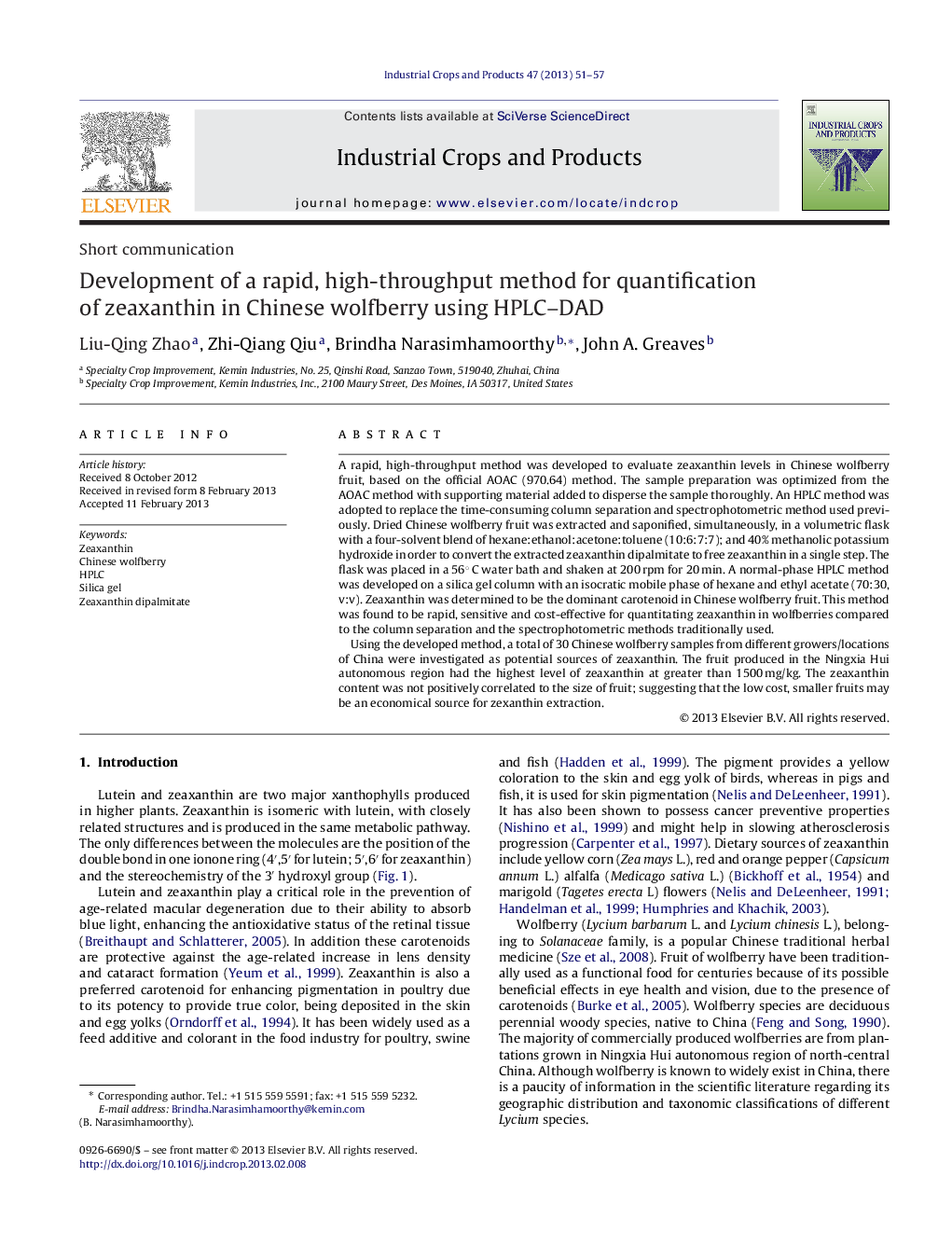| کد مقاله | کد نشریه | سال انتشار | مقاله انگلیسی | نسخه تمام متن |
|---|---|---|---|---|
| 4513582 | 1624862 | 2013 | 7 صفحه PDF | دانلود رایگان |

A rapid, high-throughput method was developed to evaluate zeaxanthin levels in Chinese wolfberry fruit, based on the official AOAC (970.64) method. The sample preparation was optimized from the AOAC method with supporting material added to disperse the sample thoroughly. An HPLC method was adopted to replace the time-consuming column separation and spectrophotometric method used previously. Dried Chinese wolfberry fruit was extracted and saponified, simultaneously, in a volumetric flask with a four-solvent blend of hexane:ethanol:acetone:toluene (10:6:7:7); and 40% methanolic potassium hydroxide in order to convert the extracted zeaxanthin dipalmitate to free zeaxanthin in a single step. The flask was placed in a 56° C water bath and shaken at 200 rpm for 20 min. A normal-phase HPLC method was developed on a silica gel column with an isocratic mobile phase of hexane and ethyl acetate (70:30, v:v). Zeaxanthin was determined to be the dominant carotenoid in Chinese wolfberry fruit. This method was found to be rapid, sensitive and cost-effective for quantitating zeaxanthin in wolfberries compared to the column separation and the spectrophotometric methods traditionally used.Using the developed method, a total of 30 Chinese wolfberry samples from different growers/locations of China were investigated as potential sources of zeaxanthin. The fruit produced in the Ningxia Hui autonomous region had the highest level of zeaxanthin at greater than 1500 mg/kg. The zeaxanthin content was not positively correlated to the size of fruit; suggesting that the low cost, smaller fruits may be an economical source for zexanthin extraction.
► A rapid, high throughput method to evaluate zeaxanthin levels in Chinese wolfberry fruit was developed and validated.
► Distinct Chinese wolfberry samples from different locations in China were investigated as potential sources for zeaxanthin.
► The fruit produced in the Ningxia Hui autonomous region had the highest level of zeaxanthin reported to date.
► The zeaxanthin content was not always positively correlated to the fruit size.
► Lack of correlation suggests that small fruits may be an economical source for zeaxanthin extraction.
Journal: Industrial Crops and Products - Volume 47, May 2013, Pages 51–57